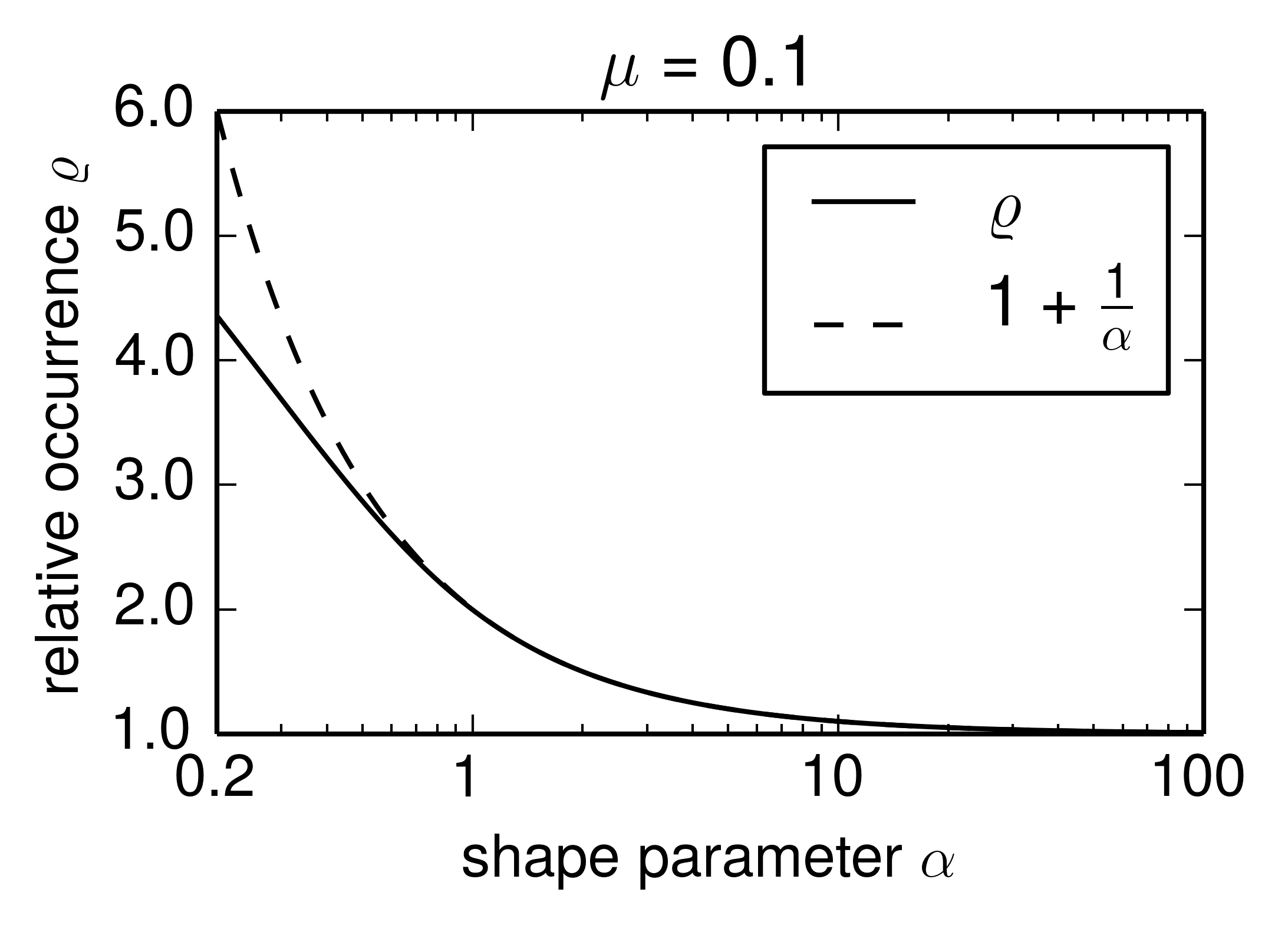Figure 2C
For the \(\alpha\), \(\beta\) pairs created for Figure 2B calculate \(\varrho\) as
and save the results. This takes some time.
import numpy as np from gamma_functions import * import scipy.integrate as integrate a_ns = np.load("data/a_ns.npy") b_ns = np.load("data/b_ns.npy") rhos = [] for a,b in zip(a_ns,b_ns): numer = integrate.quad(lambda x:x**2*fT(x,a,b),0,1)[0] denom = (integrate.quad(lambda x: x*fT(x,a,b), 0,1)[0])**2 rho = numer/denom print a, "\t", b, "\t", rho rhos.append(rho) np.save("data/rho_theoretical.npy", rhos)
Then, to get

for given \(\alpha\) plot the \(\varrho\) as calculated a above and compare with the approximation \(1 + \frac{1}{\alpha}\).
import pylab as pl import numpy as np from scipy.stats import gamma import matplotlib.ticker as ticker from matplotlib import rc rc('text', usetex=True) pl.rcParams['text.latex.preamble'] = [ r'\usepackage{tgheros}', # helvetica font r'\usepackage{sansmath}', # math-font matching helvetica r'\sansmath' # actually tell tex to use it! r'\usepackage{siunitx}', # micro symbols r'\sisetup{detect-all}', # force siunitx to use the fonts ] a_ns = np.load("data/a_ns.npy") rhos = np.load("data/rho_theoretical.npy") fig, ax = pl.subplots(1,1) fig.set_size_inches(7.2*0.5,2.2) ax.plot(a_ns, rhos , color='k', label=r'$\varrho$') ax.plot(a_ns, [1+1./a for a in a_ns], color='k', linestyle='dashed', label=r'$1+\frac{1}{\alpha}$') ax.set_title(r'$\mu = 0.1$') ax.set_xscale('log') ax.set_xlabel(r'shape parameter $\alpha$') ax.set_ylabel(r'relative occurrence $\varrho$') pl.yticks(list(pl.yticks()[0]), ['%.1f' % tick for tick in pl.yticks()[0]]) pl.xticks(sorted(list(pl.xticks()[0]) + [0.2]), sorted(['0.2']+[str(int(x)) for x in list(pl.xticks()[0])])) ax.set_xlim(0.2,100) ax.legend() pl.savefig('gamma_figC.pdf', dpi=600, bbox_inches='tight')